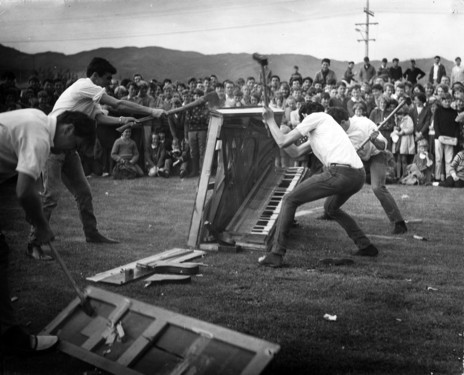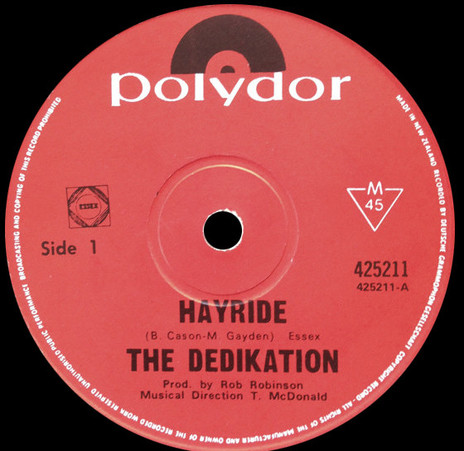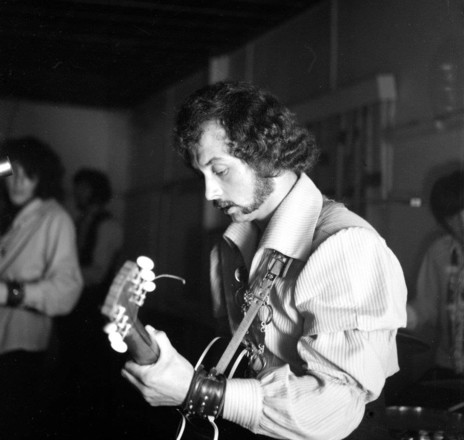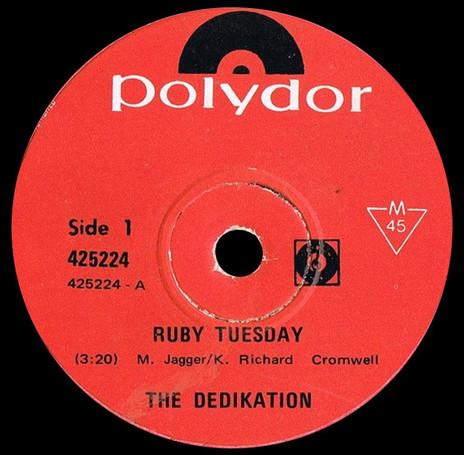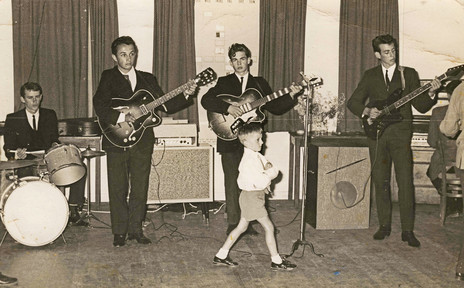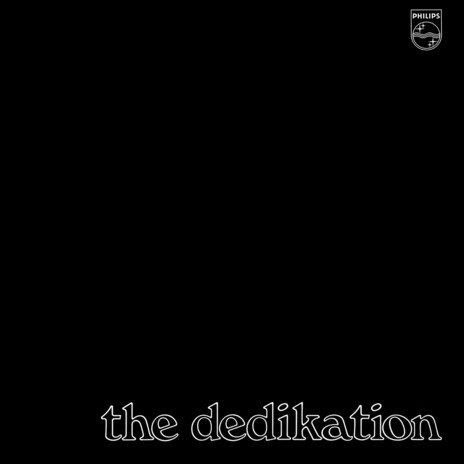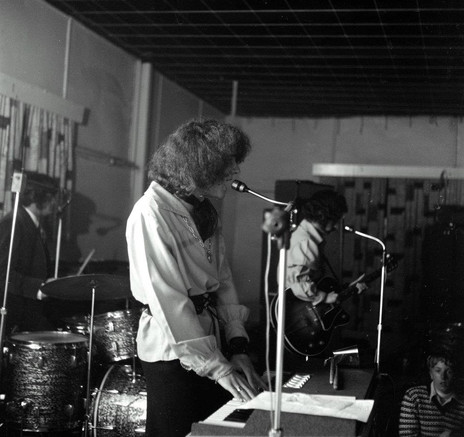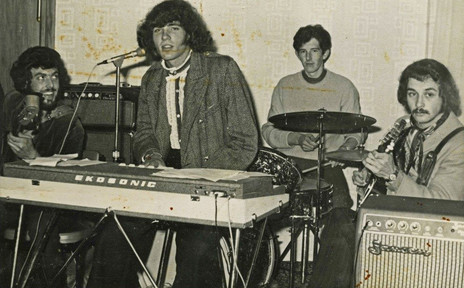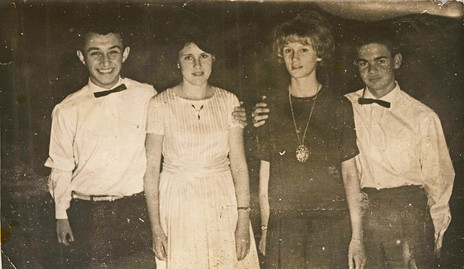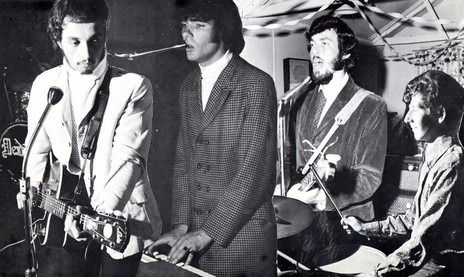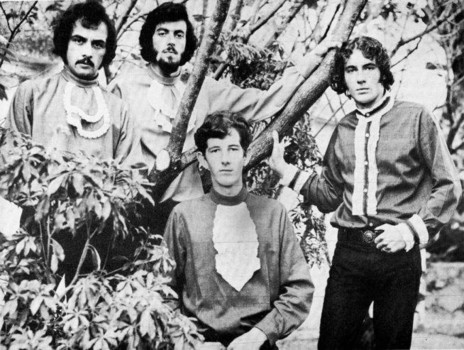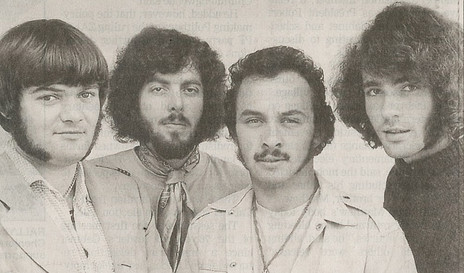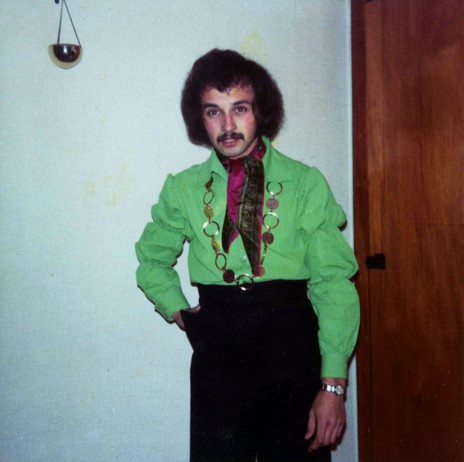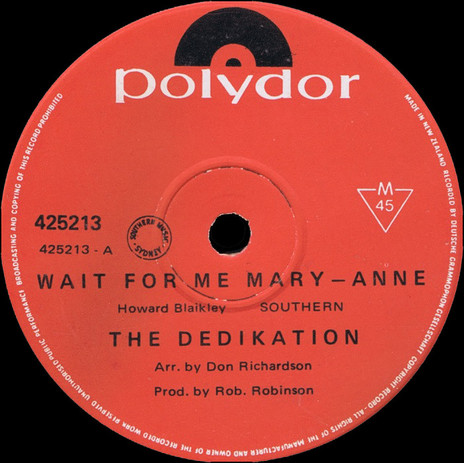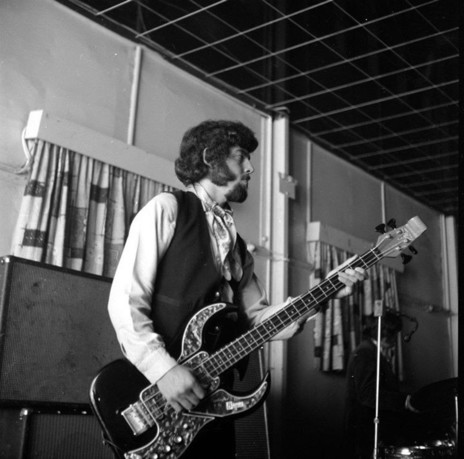As with all those songs by local artists, ‘Wait For Me Mary-Anne’ was a cover version: the 1968 original was by the Scottish band The Marmalade.
But as with so many acts at the time, The Dedikation pumped up the original and – with horns arranged by Wellington jazz saxophonist Don Richardson, and phasing courtesy of producer Rob Robinson – in their hands, ‘Wait For Me Mary-Anne’ was a strong slice of upbeat pop-rock.
The Dedikation were from the Hutt Valley, and grew out of a school band called The Crescendos formed in 1963 by singer/lead guitarist Ray Ahipene-Mercer (then simply Ray Mercer) and organist/singer Graeme Collins. Foundation pupils at Upper Hutt College, the music teacher Laughton Patrick encouraged them to form a band. In The Crescendos they were joined by their friends Wayne Marsh and Mike Martin. Collins was so passionate about The Beatles he wallpapered his bedroom walls with hundreds of photos of the band. When the tickets went on sale for The Beatles’ Wellington concert in 1964, he caught an early train into the city and was first in the queue at 7am. Ahipene-Mercer was also at the concert, and later said that was the moment that “rock’n’roll truly claimed us.”
When schoolboy musicians Graeme Collins and Ray Mercer saw The Beatles in Wellington,
“rock’n’roll truly claimed us”.
The Crescendos played school dances and their repertoire was largely instrumentals by The Shadows and The Ventures, “but then we very quickly started copying bands like the Rolling Stones and the Beatles, Chuck Berry and some of the R&B bands,” Ahipene-Mercer recalled for an Upper Hutt City Library oral history interview in 2016. “We were passably okay for 15-year olds. We got plenty of work, things like sporting clubs.”
When the real world beyond school beckoned in 1967, Ahipene-Mercer and Collins joined up with drummer Michael Parlane and bassist Graham Harvey and became The Dedikation. They worked the dancehall circuit building a reputation but, when they decided to go professional, drummer Parlane stepped aside and was replaced by 18 year-old Bruce Whitelaw from Invercargill band The State of Mind.
Collins and Ahipene-Mercer joined the NZBC after leaving school, Collins having a stint on Broadcasting’s committee to decide which imported records should be purchased, and which should not, because they might offend the public.
In early 1969 The Dedikation released their debut single on Polydor, ‘Hayride’ b/w ‘Barefootin’. Both songs were cover versions, and the single received national airplay but didn’t chart. The Dedikation’s ‘Hayride’ was up against another version – by the German band The Boston – but the original was by Gary Lewis & the Playboys.
The Dedikation’s second single, in mid-1969, was ‘Wait For Me Mary-Anne’ b/w ‘Sally Had a Party’. Ooccasionally mistitled ‘Wait For Me Marianne’ on compilations, ‘Wait For Me Mary-Anne’ was written by UK duo Alan Blaikley and Ken Howard, who also penned songs for the Hollies, the Tremeloes, and Dave Dee, Dozy, Beaky, Mick and Tich. When sent a copy of the disc, Blaikley and Howard replied, “We would like to congratulate you on a tremendous effort. It’s really exciting to think that even in places as comparatively small as New Zealand there is an up-and-coming pop scene and a lively interest in what is happening now in Britain and the States. It says much for the future of pop worldwide that this is happening.”
Collins and Ahipene-Mercer left the NZBC behind when the band turned professional in August 1969, encouraged by the No.2 chart placing and heavy airplay of ‘Wait For Me Mary-Anne’. A dance in New Plymouth attracted 900 teenagers, a local record, and in Wellington hundreds of teenagers had to be turned away when the “house full” sign went up outside a dance hall.
‘Wait For Me Mary-Anne’ was nominated for the 1969 Loxene Golden Disc Award, which was won by The Hi-Revving Tongues for ‘Rain and Tears’. The members of The Dedikation were then aged 17 to 21.
Forty years later, on his induction into the Southland Rock’n’Roll Hall of Fame, Whitelaw told the Southland Times that when the Dedikation reached the Top 10 they got a pay rise of $5 a week, up to $35 a week. He didn’t care about the money, he just liked the lifestyle.
However the work opportunities poured in and in November 1969 the band released its sole, self-titled album. Again, all the songs were cover versions. Early in 1970, another single was lifted from it, their slightly idiosyncratic, big ballad version of the Rolling Stones’ ethereal ‘Ruby Tuesday’ (b/w ‘Be a Woman’). It didn’t match their hopes but reached a creditable No.12 on the national charts in 1970.
The band spent the spring and summer of 1969-1970 touring New Zealand, and took part in the Christmas/New Year Family Spectacular tour, which culminated at New Plymouth’s Bowl of Brooklands.
By the time ‘Ruby Tuesday’ was released in 1970, the band was starting to break apart.
By the time ‘Ruby Tuesday’ was released, however, the band was starting to break apart. Collins – still only 20 when the band split – joined Human Instinct for a short spell on keyboards after the departure of Billy TK. He was then briefly lead singer and keyboardist in a covers band called Staff which – after throwing the I-Ching – he renamed Dragon in 1971 and they played at the Great Ngāruawāhia Music Festival in January 1973. Around this time he co-wrote the early Marc Hunter single ‘X-Ray Creature’ with Arthur Baysting. Collins left Dragon before Marc Hunter and their rock’n’roll notoriety arrived.
Harvey went on to the Falcons and Whitelaw spent four years in the United States, returned to Invercargill then in 1977 took up a job in Auckland for a few years. But he was drawn to the outdoors and the Kaipara Harbour.
Ray Ahipene-Mercer left for Britain where he played in pub bands, and briefly returned to New Zealand to perform in the 1978 tour of The Rocky Horror Show, fronted by Gary Glitter. Back in the UK, Ahipene-Mercer trained as a luthier in Lancashire. The “mediaeval” working conditions drove him back to London, where he worked for Andy’s Guitar Workshop, whose clients included Led Zeppelin and Roxy Music. After the death of his wife Chris from a chronic illness, he returned to Wellington in 1981, and set up his own guitar workshop. In 2000 he was elected to the Wellington City Council, and stayed there for 16 years, concentrating on Māori, equality and environmental issues.
Before leaving the early line-up of Dragon, in 1972 Collins shifted to the Coromandel to lead an alternative lifestyle. According to journalist Diana Dekker, the following seven years – in Waitekauri, near Waihi – were some of the best of his life. Collins returned to Wellington in 1980, performing in restaurants, nightclubs, composing and painting. Like Ahipene-Mercer he became involved in conservation causes. He died of cancer in 2004.
THEIR Dedikation’s LOOK WAS PART-CARNABY STREET FOP AND PART-WINE WAITER
The Dedikation’s footprint may be small but their enthusiasm was evident, no more so than on their album in the psychedelic cover of a Cryan’ Shames’ song – the awkwardly entitled ‘Greenburg, Glickstein, Charles, David Smith and Jones’ – which also benefitted from the then-popular phasing effect. They arrived at a time when pop was becoming more ambitious and the post-psychedelic trickle-down was in effect. That was certainly true in their music, and photos from the period show them with unusual period-piece necktie adornments. The look is part-Carnaby Street fop and part-wine waiter.
They were different days back then, but also a rare moment for Kiwi singles. And when the group disbanded in February 1970, the Auckland Star saw fit to run a story, with before and after photos, about Collins’s new shorter hair style.
The Dedikation reunited just once, in 1999, for a concert and to raise funds for child cancer. It had been 10 years since Ahipene-Mercer and Collins had seen each other. “We’d all moved on since [1969],” said Ahipene-Mercer, “gone down different roads. It was nice to briefly revisit the past.”
